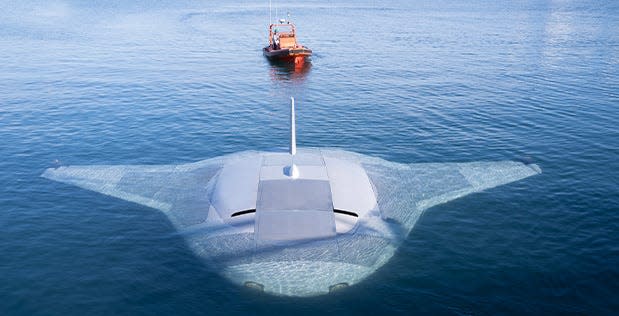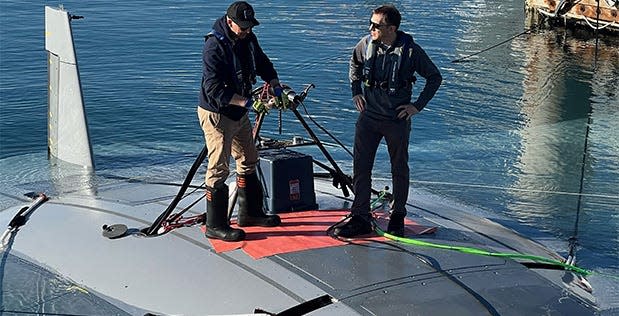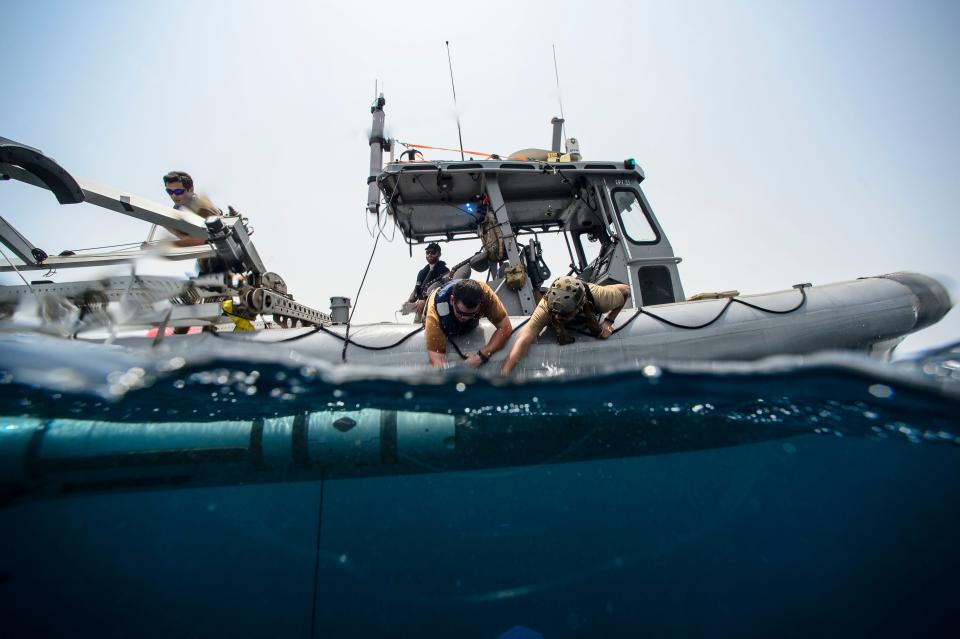-
The US military is developing a huge underwater drone called the “Manta Ray.”
-
The unmanned system passed its first major test at sea earlier this year.
-
Drones like the Manta Ray can function like a torpedo, mine, or small submarine.
A US military submarine that looks like a giant metal manta ray and is currently under development passed its first major test at sea.
The unmanned prototype aptly named “Manta Ray” completed “full-scale, in-water testing” off the coast of Southern California in February and March, the Pentagon’s research arm, the Defense Advanced Research Projects Agency (DARPA) said in a statement on Wednesday.
The Manta Ray, built by defense contractor Northrop Grumman, is an uncrewed underwater vehicle, a type of drone that can essentially function like a torpedo or small submarine but can also double as a mine.
According to DARPA, the five-year-old Manta Ray program looks to build a “new class of long-duration, long-range, payload-capable UUVs” that can operate in various maritime environments around the world. It didn’t really elaborate further on the function.
Testing earlier this year evaluated the Manta Ray’s different modes of propulsion and steering — its buoyancy, propellers, and control surfaces — while submerged at sea.

“Our successful, full-scale Manta Ray testing validates the vehicle’s readiness to advance toward real-world operations after being rapidly assembled in the field from modular subsections,” Kyle Woerner, the DARPA program manager for the Manta Ray, said in the statement.
“The combination of cross-country modular transportation, in-field assembly, and subsequent deployment demonstrates a first-of-kind capability for an extra-large UUV,” he added.
One photograph of the Manta Ray shows it sitting adjacent to a support boat, and another shows it with people standing on top of it. These underscore just how large this drone actually is. Despite it’s large size, the underwater system can be easily shipped and assembled, DARPA said, which allows for the vehicle to be quickly deployed anywhere without crowding up the piers at US naval facilities.


Also, “shipping the vehicle directly to its intended area of operation conserves energy that the vehicle would otherwise expend during transit,” Woerner said.
“Once deployed, the vehicle uses efficient, buoyancy-driven gliding to move through the water,” he continued. “The craft is designed with several payload bays of multiple sizes and types to enable a wide variety of naval mission sets.”
DARPA noted that it is working with the US Navy on next steps for testing the Manta Ray.
The Navy already operates various types of UUVs — alongside unmanned surface vehicles (USVs) and unmanned aerial vehicles (UAVs) — for reconnaissance and intelligence-gathering missions.


In the Middle East, for example, a first-of-its-kind Navy initiative known as Task Force 59 is working to merge unmanned systems and artificial intelligence with maritime operations in the region. This program is intended to give the US more surveillance and deterrence options and is becoming an increasingly important job as wars become more dependent on autonomous platforms.
The US, however, is not the only one to operate maritime drones; it has seen friends and foes alike use USVs and UUVs to conduct operations amid conflicts in the Red Sea and Black Sea.
In recent months, Iran-backed Houthi rebels have attempted to use USVs and UUVs to hit ships off the coast of Yemen. These threats, however, are either destroyed by US and coalition forces in the water, or in preemptive strikes on land before the weapons can even be launched.
Ukraine, meanwhile, has relied heavily on USVs to target Russian warships in the Black Sea. Kyiv has been quite successful with this asymmetric style of warfare, which Moscow has been unable to consistently defend against.
Read the original article on Business Insider
Source Agencies

